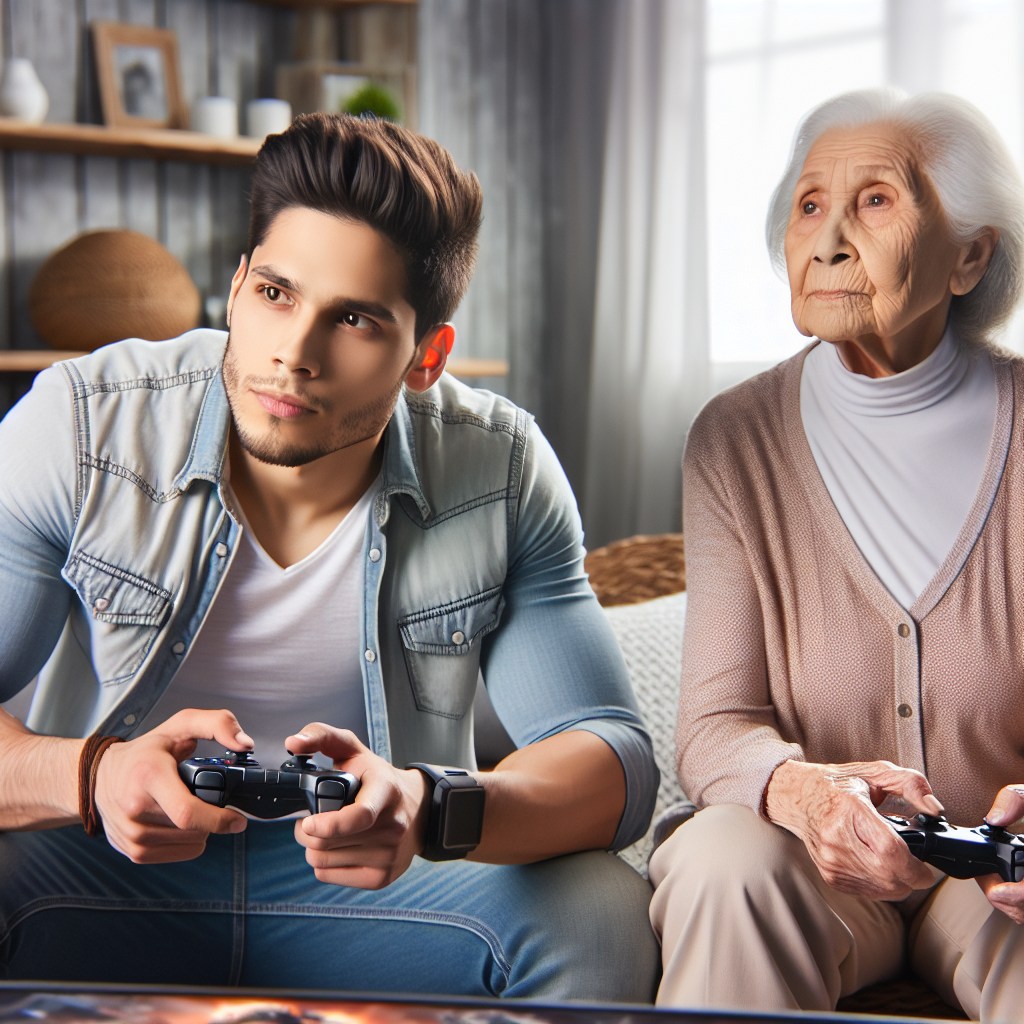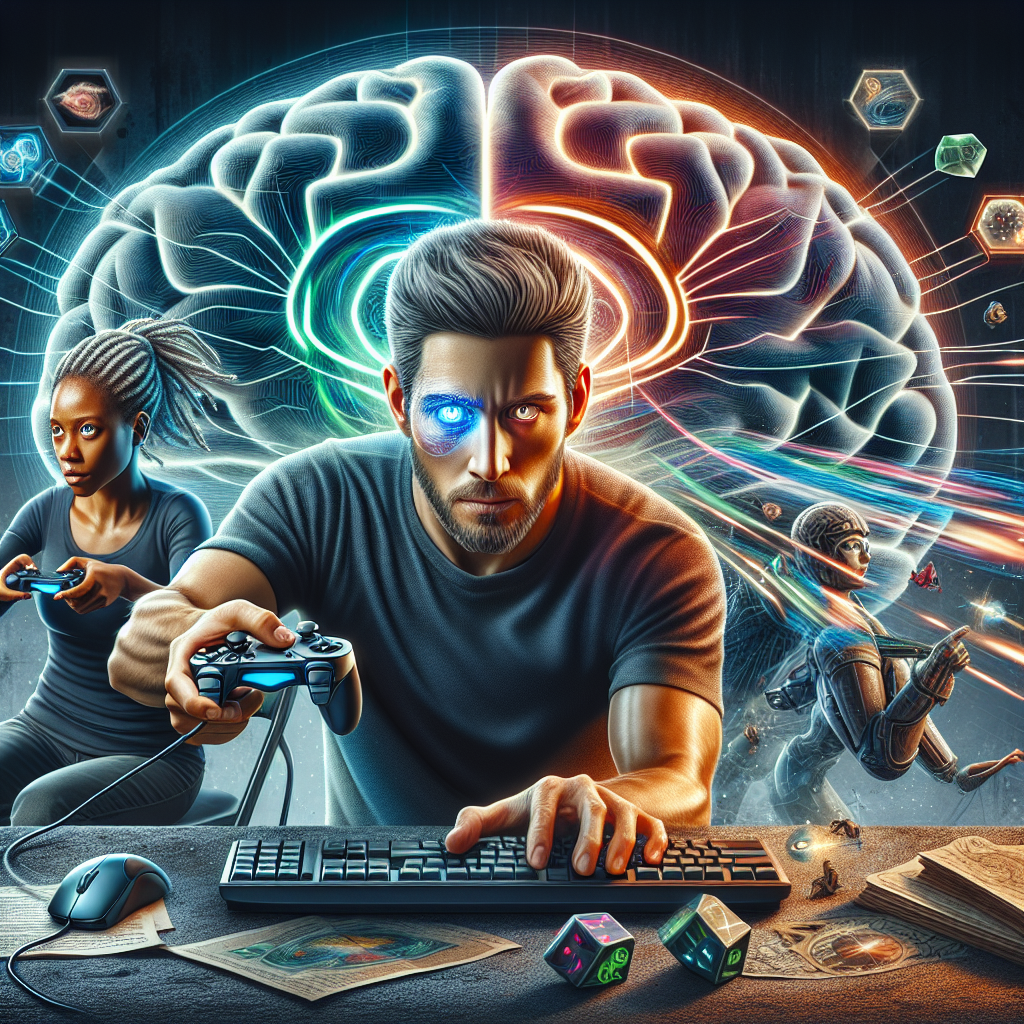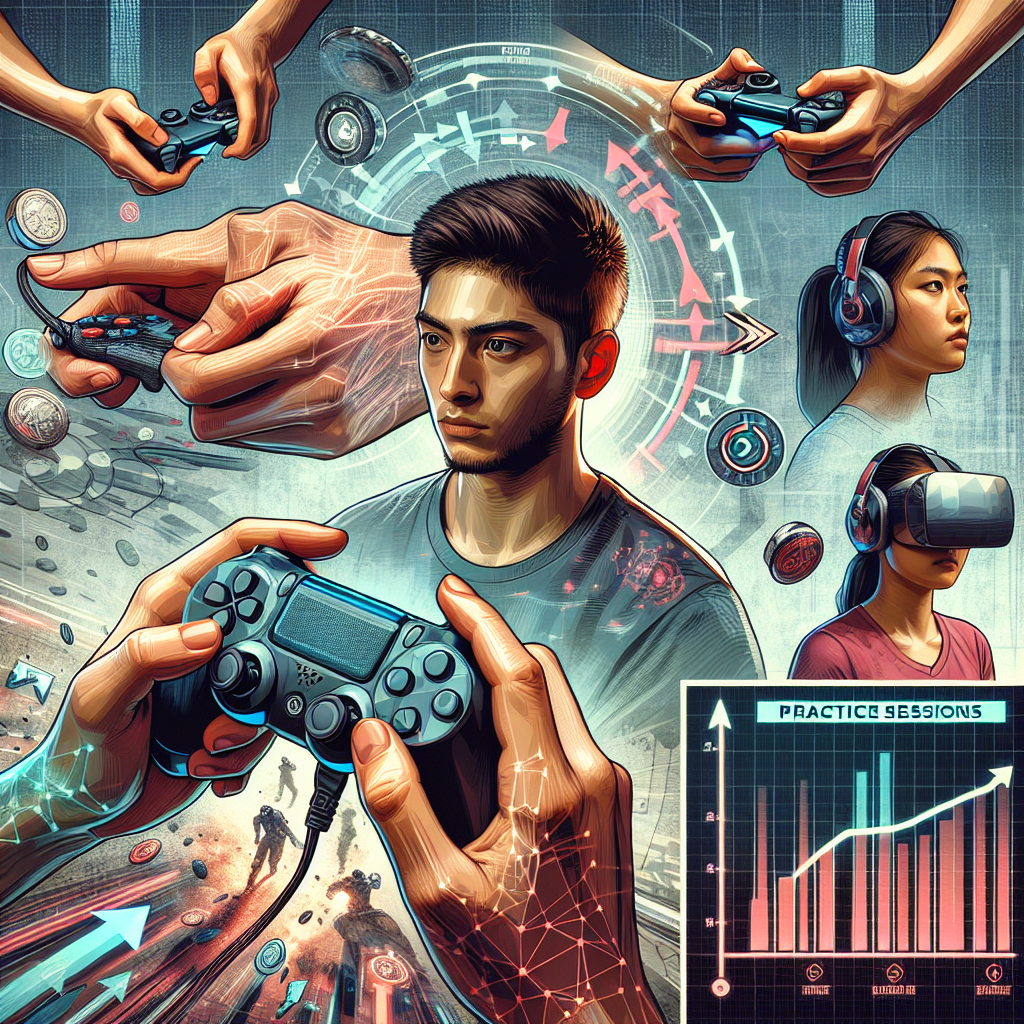Are you looking to take your gaming skills to the next level? Improving your hand-eye coordination and reaction time is crucial for mastering any game. From fast-paced shooters to precision-based strategy games, having quick reflexes and precise movements can make all the difference in your performance. In this guide, we will explore various tips and techniques to help you enhance your hand-eye coordination and reaction time in gaming. Whether you’re a casual player looking to boost your skills or a competitive gamer striving for victory, these tips will help you sharpen your abilities and dominate the virtual battlefield.
Understanding Hand-Eye Coordination in Gaming
Hand-eye coordination in gaming refers to the ability of the brain to process visual information received through the eyes and coordinate it with the movement of the hands to execute a specific task within the game environment. It involves the seamless integration of visual input with motor skills to achieve precise and accurate movements during gameplay. In essence, it is the synchronization of what the eyes see with what the hands do in response to that visual stimulus.
Definition of hand-eye coordination
Hand-eye coordination is the efficient functioning of the eyes and hands in tandem to perform tasks that require simultaneous visual processing and physical movement. In gaming, this skill is crucial as it directly impacts a player’s ability to react swiftly to in-game stimuli such as enemy movements, obstacles, or targets.
Importance of hand-eye coordination in gaming
In the context of gaming, hand-eye coordination is a fundamental skill that can significantly influence a player’s performance and success in various game genres. It allows gamers to navigate virtual environments with precision, aim accurately at targets, and execute complex maneuvers seamlessly. Without effective hand-eye coordination, gamers may struggle to react swiftly to changing game scenarios, leading to errors, missed opportunities, and overall subpar gameplay.
How hand-eye coordination affects gameplay performance
The level of hand-eye coordination a gamer possesses directly impacts their gameplay performance in terms of speed, accuracy, and overall efficiency. Gamers with superior hand-eye coordination skills tend to exhibit quicker reaction times, enhanced spatial awareness, and improved accuracy in executing in-game actions. This gives them a competitive edge, especially in fast-paced games that require rapid decision-making and precise movements. Conversely, poor hand-eye coordination can result in delayed responses, clumsy movements, and decreased overall performance in gaming scenarios.
Factors Affecting Hand-Eye Coordination
-
Visual perception and processing speed: In gaming, quick and accurate visual perception is crucial for hand-eye coordination. The ability to process visual information rapidly, such as identifying objects, patterns, and movements on the screen, significantly impacts a player’s reaction time and overall performance. Enhancing visual perception through practice and training can lead to improved hand-eye coordination in gaming scenarios.
-
Motor skills development: Hand-eye coordination heavily relies on the synchronization of visual information processing with physical movements. Developing fine motor skills, such as precise aiming, rapid clicking, or intricate maneuvers, can enhance hand-eye coordination in gaming. Regular practice and specific exercises targeting motor skill improvement can help gamers refine their coordination abilities and perform more effectively during gameplay.
-
Cognitive abilities and decision-making: Cognitive functions, including attention, concentration, and decision-making, play a vital role in hand-eye coordination in gaming. Quick reaction times, strategic thinking, and the ability to adapt to changing situations are essential for successful gameplay. Strengthening cognitive abilities through mental exercises, multitasking drills, and strategic gameplay can sharpen hand-eye coordination and reaction time in gaming environments.
Enhancing Hand-Eye Coordination for Gaming

Improving hand-eye coordination is crucial for gamers looking to enhance their performance. Here are some effective strategies to boost this skill:
- Practice exercises to improve hand-eye coordination:
- Engage in activities such as juggling, playing catch, or using hand grips to enhance coordination between your hands and eyes.
-
Regularly practicing these exercises can help strengthen the connection between visual input and hand movements, leading to improved coordination during gaming sessions.
-
Utilizing gaming peripherals for precision and accuracy:
- Invest in high-quality gaming peripherals such as a gaming mouse with adjustable sensitivity settings or a mechanical keyboard with tactile feedback.
-
These peripherals can provide better precision and responsiveness, allowing for more accurate hand-eye coordination while gaming.
-
Incorporating hand-eye coordination drills into daily routine:
- Set aside dedicated time each day to perform hand-eye coordination drills specifically designed for gamers.
- Activities like target shooting games, hand exercises using a stress ball, or virtual reality simulations can help improve coordination and reaction time in gaming scenarios.
Recommended Hand-Eye Coordination Exercises
hancing Hand-Eye Coordination for Gaming
- Target tracking exercises:
- These exercises involve focusing on moving targets either on screen or in the physical environment.
- By practicing tracking these targets accurately and swiftly, players can improve their hand-eye coordination.
-
Examples include aim training scenarios in first-person shooter games or using specialized target-tracking apps.
-
Quick reflex games:
- Quick reflex games are designed to test and improve reaction times and hand-eye coordination.
- Games like “Whack-a-Mole” or “Fruit Ninja” require players to react swiftly to visual stimuli, enhancing their ability to coordinate hand movements with what they see on the screen.
-
Regularly engaging in these games can help gamers sharpen their reflexes and coordination skills.
-
Hand dexterity drills:
- Hand dexterity drills focus on enhancing the nimbleness and coordination of hand movements.
- Activities such as using a stress ball, playing with a fidget spinner, or practicing intricate finger exercises can improve fine motor skills essential for gaming.
- These drills help gamers develop precise control over their hand movements, leading to better hand-eye coordination during gameplay.

Understanding Reaction Time in Gaming
Reaction time in gaming refers to the speed at which a player can perceive a stimulus, process the information, and respond accordingly within the game environment. It is a critical skill that directly impacts a player’s ability to react swiftly to in-game events, such as enemy movements, obstacles, or incoming attacks.
Definition of reaction time in gaming
Reaction time in gaming is the duration between the presentation of a stimulus, such as an enemy appearing on the screen, and the player’s response to that stimulus, like aiming and shooting at the enemy. It is measured in milliseconds and can vary significantly among players based on their cognitive abilities and level of gaming experience.
Significance of fast reaction time for competitive gaming
In competitive gaming scenarios, where split-second decisions can determine victory or defeat, having a fast reaction time is crucial. Players with quicker reaction times have a competitive edge as they can outmaneuver their opponents, execute complex strategies more effectively, and capitalize on opportunities faster than slower-reacting players.
How reaction time impacts gameplay outcomes
The impact of reaction time on gameplay outcomes cannot be overstated. A player with faster reaction times can dodge incoming attacks, make precise shots, and adapt to rapidly changing situations with greater ease. On the other hand, a player with slower reaction times may struggle to keep up with the pace of the game, leading to frequent mistakes, missed opportunities, and ultimately, a lower performance level in competitive gaming environments.
Factors Influencing Reaction Time
- Neurological factors affecting reaction speed
- The efficiency of neural pathways in the brain plays a crucial role in determining reaction time in gaming.
- The speed at which visual information is processed by the brain influences how quickly a player can react to in-game stimuli.
-
Neurotransmitters such as dopamine and acetylcholine can impact the speed and accuracy of responses during gaming sessions.
-
Training methods to enhance reaction time
- Engaging in specific exercises and drills designed to improve hand-eye coordination can help enhance reaction time.
- Practicing with reaction time training tools and software can stimulate the brain and nervous system to react more quickly to visual stimuli.
-
Incorporating activities that require quick decision-making and precise movements, such as sports or martial arts, can also contribute to improving reaction time in gaming.
-
Strategies to reduce reaction time lag
- Minimizing distractions in the gaming environment, such as reducing background noise and optimizing lighting conditions, can help reduce reaction time lag.
- Ensuring proper ergonomic setup and comfortable seating position can enhance focus and reduce physical obstacles that may hinder reaction time.

- Regular breaks during gaming sessions can prevent mental fatigue and maintain optimal cognitive function, leading to improved reaction time in gameplay.
Strategies for Improving Reaction Time in Gaming
- Mental alertness techniques for faster reactions
Incorporating mental alertness techniques can significantly enhance reaction time in gaming. One effective method is to practice mindfulness exercises before gaming sessions to sharpen focus and concentration. Additionally, engaging in activities that promote cognitive agility, such as puzzles or brain teasers, can help improve overall mental acuity and responsiveness during gameplay. Furthermore, maintaining a healthy lifestyle with adequate sleep and nutrition can also contribute to mental alertness and quick reactions while gaming.
- Physical exercises to boost reflexes and response time
Physical exercises play a crucial role in enhancing reflexes and response time in gaming. Including activities like hand-eye coordination drills, quick hand movements, and exercises that improve dexterity can help increase overall agility and coordination. Regularly engaging in workouts that target hand and arm muscles, such as grip strength training or finger exercises, can also boost reaction time and precision in gaming. Moreover, incorporating activities like yoga or tai chi can improve overall balance and coordination, further enhancing gaming performance.
- Implementing in-game tactics to anticipate movements
Strategic gameplay is essential for anticipating movements and improving reaction time in gaming. One effective tactic is to analyze opponents’ patterns and behaviors to predict their next moves accurately. By studying gameplay mechanics and understanding game dynamics, players can proactively anticipate in-game actions and react swiftly. Additionally, practicing specific scenarios repeatedly can help in developing muscle memory and instinctive reactions to various in-game situations. Implementing strategic planning and decision-making during gameplay can significantly enhance hand-eye coordination and reaction time in gaming.
Effective Reaction Time Training Methods
- Reaction Time Training Apps and Tools
In today’s digital age, there is a plethora of reaction time training apps and tools available for gamers looking to enhance their skills. These apps often feature a variety of mini-games and exercises specifically designed to improve reaction speed. One popular example is “Aim Trainer,” which offers tasks that require quick reflexes and precise aiming to hit targets. Utilizing these apps regularly can help gamers fine-tune their hand-eye coordination and reaction time in a controlled and interactive environment.
- Simulation Games for Honing Reaction Speed
Simulation games can also be valuable tools for improving reaction time in gaming. Titles like racing simulators or first-person shooters provide immersive environments that demand fast decision-making and swift responses to in-game stimuli. By engaging with these types of games, players can challenge themselves to react quickly to changing scenarios, ultimately sharpening their hand-eye coordination and enhancing their overall gaming performance.
- Competitive Gameplay for Real-Time Reaction Practice
Engaging in competitive gameplay is another effective method for honing reaction time in gaming. By participating in multiplayer matches or tournaments, gamers are exposed to unpredictable situations that require split-second reactions. The pressure of competing against skilled opponents can push players to react faster and more accurately, leading to noticeable improvements in their hand-eye coordination and overall reaction time.
Maximizing Performance Through Hand-Eye Coordination and Reaction Time
Continuous Practice and Skill Development
– Dedicated practice sessions are crucial for improving hand-eye coordination and reaction time in gaming.
– Repetitive gameplay helps in training the brain to react faster to visual stimuli.
– Engaging in drills specifically targeting hand-eye coordination can enhance the brain’s ability to process information quickly.
– Regular practice sessions can also improve muscle memory, leading to quicker and more precise movements during gameplay.
Balancing Speed and Accuracy in Gaming Maneuvers
– Finding the right balance between speed and accuracy is essential for optimizing performance in gaming.
– While speed is important for quick reactions, accuracy ensures that movements are precise and effective.
– Practice focusing on both speed and accuracy can help gamers develop a well-rounded skill set.
– Striking a balance between the two allows players to react swiftly while maintaining control over their movements.
Tracking Progress and Making Adjustments for Optimal Performance
– Monitoring progress through gameplay analysis and performance metrics is essential for identifying areas of improvement.
– Keeping track of reaction times and hand-eye coordination skills can help gamers gauge their development over time.
– Making adjustments based on feedback and analysis can lead to targeted practice sessions that address specific weaknesses.
– Regularly assessing performance and adapting strategies accordingly can result in continuous improvement in hand-eye coordination and reaction time.
FAQs: Tips for Improving Hand-Eye Coordination and Reaction Time in Gaming
How can I improve my hand-eye coordination for gaming?
To improve your hand-eye coordination for gaming, it is important to engage in activities that challenge these skills. This can include practicing specific games that require quick reactions and precise movements, as well as engaging in physical activities such as sports or playing musical instruments. Additionally, incorporating hand-eye coordination exercises into your daily routine, such as using a hand-eye coordination ball or practicing with a focus pad, can help enhance these skills.
What are some tips for improving reaction time in gaming?
There are several tips you can follow to improve your reaction time in gaming. One effective method is to focus on improving your overall speed and agility through regular physical exercise. Additionally, practicing specific games that require quick decision-making and precise movements can help to sharpen your reaction time. Engaging in activities that challenge your reflexes, such as playing fast-paced action games or participating in reaction training drills, can also be beneficial in enhancing your reaction time skills.
Are there any specific techniques I can use to enhance my hand-eye coordination and reaction time in gaming?
There are several techniques you can utilize to enhance your hand-eye coordination and reaction time in gaming. One popular method is to practice eye-tracking exercises, such as following moving objects with your eyes or focusing on multiple points at once. Engaging in hand-eye coordination drills, such as juggling or using hand-eye coordination tools, can also help to improve your skills in this area. Additionally, incorporating mindfulness techniques, such as deep breathing and visualization exercises, can help to improve your focus and concentration during gaming sessions, ultimately enhancing your hand-eye coordination and reaction time.